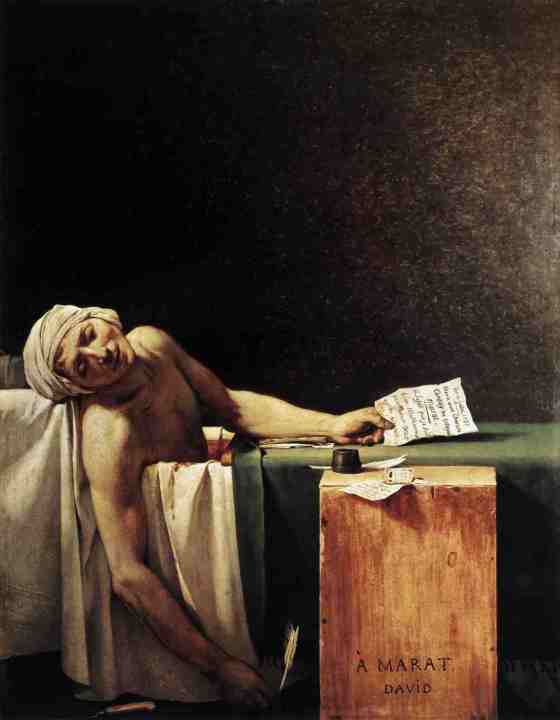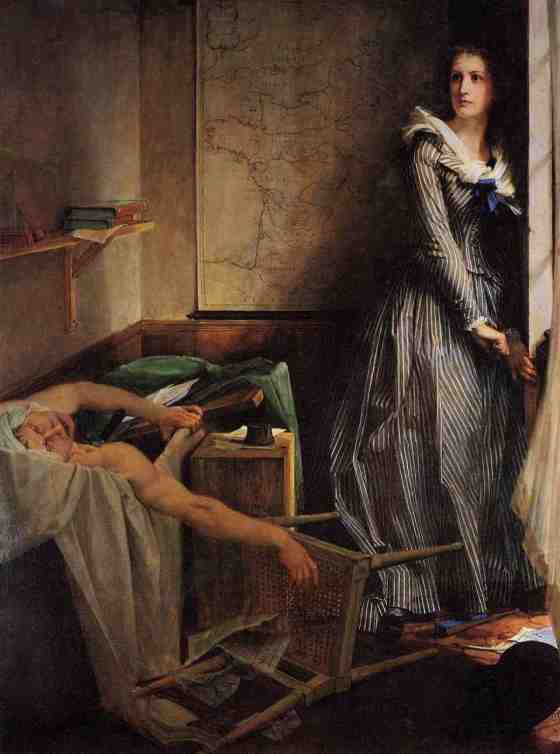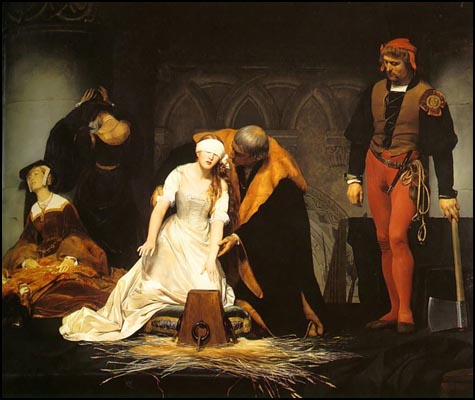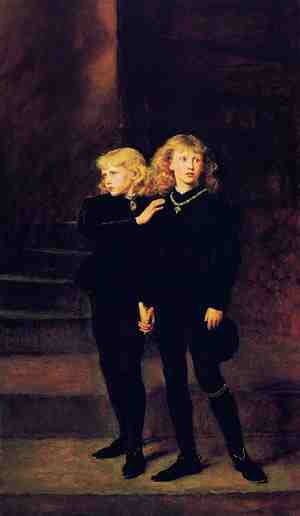Quite why images have such a powerful hold on us is a subject that is far beyond the scope of this post, but for some reason when we see things we give them considerably more credibility than perhaps we should, so I’d like to pick up on a few paintings that highlight how subjective images really are when interpreting history.
Jacques-Louis David’s most famous work The Death of Marat (1793) portrays the moment after his assassination by Charlotte Corday and is revolutionary in more ways than one. David’s immortalisation of the victim as a (Christian) martyr is interesting not only because Marat was far from sainthood, having executed many innocents as enemies of the state, but also because it was David’s choice to portray Marat in such a manner.
David’s friendship and allegiance to Marat, as well as his own political convictions, is evident in this image, and yet events would conspire against them, as both Marat (posthumously) and David (before his death in 1825) would fall from grace because of their political persuasions. By 1860 when Paul-Jacques-Aimé Baudry painted Charlotte Corday the public perception of Marat was clearly very different, yet even now it is David’s powerful image of the ‘martyr’ we recall when Marat is discussed, a supreme example of an artist with singular talent inspired by his own political convictions.
Baudry’s interpretation of that event was influenced by the 19th century history painting movement. This form of academic painting would see the retelling of many of the Tower’s events, capturing their mood at the expense of historic fact. A couple of examples will suffice.
Delaroche’s The Execution of Lady Jane Grey focuses on the tragedy of the whole Grey saga, her dress signifying her innocence and the walls representing her imprisonment. That the execution took place outside and Grey’s last words would suggest she faced her ordeal with significantly more dignity than is represented here are unimportant for Delaroche’s ends, as he embraces the moral high ground.
The story of the princes in the Tower has long fascinated Tower visitors, largely because we’ll never know what happened to them, but Millais chooses to focus on the emotional austerity of the events, interpreted through Victorian preoccupations with the welfare of children. The painting suggests that the princes were kept in a dungeon (there actually aren’t any at the Tower) while in reality the boys enjoyed the considerable comforts associated with their status during their imprisonment. The shadowed figure coming down the stairs also leaves little to the imagination, but whether they were actually murdered is something we will never know. But why let any of that get in the way of a good painting?
Having used this image with young people to explore the story of the princes it’s interesting to see how it has informed their understanding of the events in question. They are shocked to discover how unreliable the image is as evidence, but it’s also interesting to see how they interpret the painting through their own cultural framework. A colleague told me that one student asked if the painting was of the first gay people kept at the Tower, a conclusion she arrived at based on the princes’ effeminate looks.
And while we may smirk at such a thought process, it is a very real problem we deal with when relying on images as historic evidence, and in the next post I’ll take a look at how this relates to photography and the Tower.



